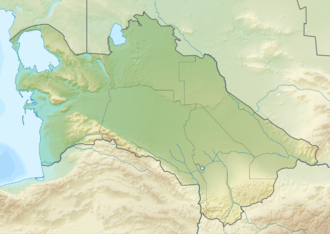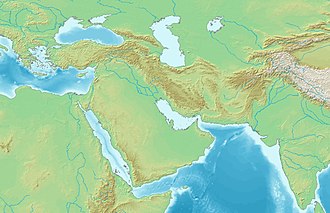Ulug depe (in Turkmen) | |
 | |
| Coordinates | 37°9′20.23″N60°1′46.02″E / 37.1556194°N 60.0294500°E |
|---|---|
| History | |
| Periods | Bronze Age |
| Cultures | BMAC |
Ulug Depe is an ancient Bronze Age site in the foothills of the Kopet Dag Mountains in the Karakum Desert of Kaka District (Kaahka) in the Ahal Province of south-eastern Turkmenistan. It covers around 13 hectares and lies on a mound at a height of about 30 meters, displaying the longest stratigraphic sequence of Central Asia, from the Late Neolithic, represented by Jeitun culture, until the pre-Achaemenid period. [1] [2] [3] [4] [5] [6] [7] [8] [9] [10]

